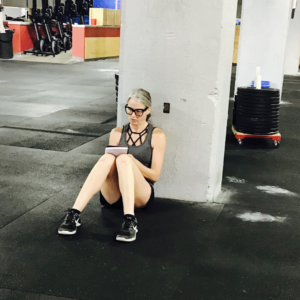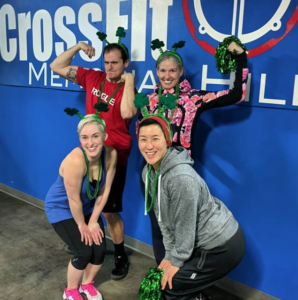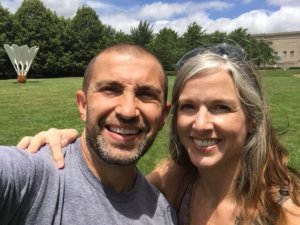There are a few universal truths when it comes to either losing weight or gaining muscle. Truth Number 1: Nutrition is #1. Truth Number 2: If you do not meal prep you will fail at #1. Meal prep doesn’t need to be nearly as daunting as you think. Follow these simple tips and practice, practice, practice!
1. Plan to Fail
You want to lose that last 2o pounds. Or maybe you want to get a bit stronger. Whatever your goal is, you should just assume right off the bat that you’re going to find a way to not follow through. You’ll say you’re too busy. You’ll say family obligations got in the way. You’ll say that you just don’t know what to do.
But none of these are true. The truth is deeply rooted in behavioral science. Decision fatigue is a phenomenon that occurs when you’re forced to make decision after decision throughout the day. Your cognitive ability goes down and your ability to make decisions becomes worse and worse. By knowing exactly what you’ll be eating from each meal in a given day you’ve “pre-made” a decision, eliminating the risk of decision fatigue.
The second factor at play is that you’re starting a new habit. Any new habit you start will be the first one to go at the first sign of difficulty. You’re never “too busy” to brush your teeth are you? What about being “too busy” to shower? What about being “too busy” to chit chat at work? Why are we never “too busy” for these things? Because these are normal parts of our routine and habits; it would feel weird to not do them. The newest habits are always the first to go.
2. Should you change your own oil?
Do you change the oil in your car? Could you do it? Probably. It’s an easy enough task after all. But should you do it? Let’s say that you can go somewhere and have it done for $35. If you were to do it yourself, you’d probably spend half that on oil and a filter. Seems like a great deal, right?
Wrong.
By the time you run to the store to buy your oil and filter, you’re about 40 minutes into the project. Then, you change your oil. Now you have a bunch of old oil in containers in your garage. You’re a good citizen, so you won’t just dump that stuff in the road. Now, you have to find somewhere to dispose of the old stuff. You probably have a solid 2 hours invested in this project. That 35 bucks doesn’t seem so bad now does it?
Get real with yourself. If you’ve tried to meal prep time and time again but can’t seem to do it on your own, budget to have someone else do it for you. This “expense” is an investment in your long-term health and wellness. I promise that money spent to have healthy food on hand is money better spent than your dumb car payment, clothes, drinks at the bar, or any other non-investment that will be obsolete in a matter of months.
3. Don’t let perfection get in the way of progress
Will your first week of meal prep be perfect? Of course not! You’re a beginner. Think about healthy food decisions in the same way you think about your development in any area of your life. The first time I picked up a guitar, I wasn’t shredding Stairway to Heaven. I wasn’t doing algebra in 2nd grade either.
Start small. Maybe you only prep breakfast for a month. Hell, that’s a win! Let’s even dial it back a bit to just snacks. Instead of heading to the candy machine at 2:00 this afternoon, pack some beef jerky, an apple, and a dozen almonds. You don’t even need to cook that!
4. See meals as formulas, not recipes
Imagine a plate divided into 8 equal parts. Here’s the breakdown of how each plate should look:
- 4 parts colorful vegetables
- 2 parts lean protein
- 1 part starch
- 1 part healthy fat
No talk of “macros” or anything complicated. This is just a plate of broccoli, skirt steak, a couple small potatoes, and a thumb-sized piece of avocado. A little salt & pepper and you got yourself a delicious meal!
Grocery shop with the same formula
Meal prep will get expensive if you go to the store to buy ingredients for recipes. If you shop according to a formula, it won’t be as expensive nor daunting. As an example, let’s look at how I would buy protein for myself for a week.
I shoot to eat between 150-175 grams of lean protein in a given day, broken into 3 meals. I’ll get Postmates or go out for 2 meals in a given week. So, in a 7-day week, I need to prep for 19 meals each containing roughly 40 grams of protein. Here’s what that’d look like:
- 10 medium chicken breasts
- 5 medium sized sirloin steaks
- 18 large eggs, 1/2 whites
Pretty basic, right? You just need to sit down and write down what are your daily needs then you’ll eventually be able to eye-ball it when you go to the store.
5. Get inspired
There is some emerging research suggesting that one’s ability to eat the same thing repeatedly may be linked to lower rates of obesity. I’ve often dubbed this one’s ability to “eat like a grown-up.” Yeah, I don’t love vegetables either. Kettle Chips are better than chicken breasts. And Sour Patch Kids trump everything. But I also don’t enjoy feeling like garbage and spending another year complaining about not reaching my body composition goals. As you’re learning to live a healthier life, you’ll need to tolerate some level of discomfort.
But that doesn’t mean that you’re stuck in this rut of dry chicken breast and raw broccoli. Food should be pleasurable! If you’re having a hard time getting inspiration for new meal prep ideas, I recommend you try what Maggie and I do every summer: Meal delivery.
Hello Fresh, Blue Apron, and a whole host of other companies have come on the scene to offer ready-to-cook meals delivered to your doorstep. What a time we’re living in! Here’s what to do:
- Sign up for one of the 3-week specials that these companies offer (don’t forget to cancel!).
- Repeat the above for one or two other first-time specials.
- Find 3-4 recipes that you really enjoyed but were also fairly easy to prepare with simple ingredients.
- Make note of the portions of the 3 elements of your plate – veggies, protein, and starch.
- Scale up the portions, make a grocery list, and make however many meals you’d like to prep for the week.
Repeat this process 1-2 times throughout the year. As you switch from one provider to the next, they’ll send you more coupons to get you back. Then, you’ll learn some new recipes to keep things fresh throughout the year.
What have you done that has really helped with your meal prep? What’s keeping you from doing it if it’s still a struggle? What actions can you take this week to step it up?








